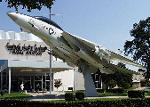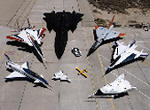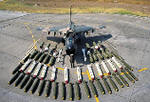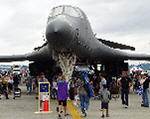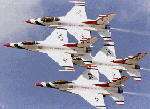
|
Description
| Manufacturer: | Boeing | |
| Base model: | F8B | |
| Designation: | XF8B | |
| Version: | -1 | |
| Designation System: | U.S. Navy / Marines | |
| Designation Period: | 1922-1962 | |
| Basic role: | Fighter | |
| Status: | Experimental | |
Specifications
| Not Yet Available |
Known serial numbers
Recent comments by our visitors
| chat cairo, AK | Thank u so much
ШҙШ§ШӘ ШЁЩҶШ§ШӘ Ш§Ш®ШЁШ§Шұ Щ…ШөШұ ШҙШ§ШӘ Ш§Щ„ШӯШЁ ЩҒШ¶Ш§ШҰШӯ Ш§Щ„ЩҒЩҶШ§ЩҶЩҠЩҶ ШҜШұШҜШҙЩҮ Ш§Щ„ШӯШЁ ШөЩҲШұ ШӯШЁ ШҜШұШҜШҙШ© Ш§Щ„ШӯШЁ ШӘШӯЩ…ЩҠЩ„ Ш§ШәШ§ЩҶЩҠ ШіЩҠЩҶШ¬Щ„ Ш§ШәШ§ЩҶЩҠ ШҙШ№ШЁЩҠ 2012 ШҙШ§ШӘ Щ…ШөШұЩҠЩҮ Ш§ШәШ§ЩҶЩҠ ШіЩҠЩҶШ¬Щ„ ШҙШ§ШӘ Щ…ШөШұЩҠШ© ШөЩҲШұ ШӯШІЩҠЩҶЩҮ 2012 ШӘШӯЩ…ЩҠЩ„ Щ…ЩҮШұШ¬Ш§ЩҶШ§ШӘ ШҙШ§ШӘ Щ…ШөШұЩү Ш№ШұШ¶ Ш§Щ„ШіЩ…Ш§Щғ ШҜШ§ЩҲЩҶ 2012 ШөЩҲШұ ШӯШЁ ШӘШӯЩ…ЩҠЩ„ Щ„ЩҲШЁШ§ШӘ 2012 ШӘШӯЩ…ЩҠЩ„ Ш§Щ„Щ…ШіЩ„ШіЩ„Ш§ШӘ Ш§Щ„ШұЩ…Ш¶Ш§ЩҶЩҠШ© 2012 ШҜШұШҜШҙШ© ШЁЩҶШ§ШӘ Щ„ШЁЩҶШ§ЩҶ ЩҠЩҲШӘЩҠЩҲШЁ ШҜШұШҜШҙЩҮ ЩҶЩҮШұ Ш§Щ„ШӯШЁ Щ…ШҙШ§ЩҮШҜШ© Ш§ЩҲЩҶ Щ„Ш§ЩҠЩҶ ШөЩҲШұ ШӯШЁ 2012 ШұШіШ§ШҰЩ„ Ш№ШӘШ§ШЁ 2012 ШҙШ§ШӘ ЩҶЩҮШұ Ш§Щ„ШӯШЁ ШӘШӯЩ…ЩҠЩ„ Ш§Щ„Ш§Щ„ШЁЩҲЩ…Ш§ШӘ Ш§Щ„Ш№ШұШЁЩҠШ© ШҙШ§ШӘ ШЁЩҶШ§ШӘ Щ„ШЁЩҶШ§ЩҶ Щ…Ш·ШЁШ®ЩҠ ШӘШӯЩ…ЩҠЩ„ Ш§Щ„Ш§Щ„ШЁЩҲЩ…Ш§ШӘ Ш§Щ„Ш§Ш¬ЩҶШЁЩҠШ© ШҙШ§ШӘ ШЁЩҶШӘ Ш§Щ„ШіШ№ЩҲШҜЩҠЩҮ ШөЩҲШұ ШұЩҲЩ…Ш§ЩҶШіЩҠШ© 2012 Щ…Ш·ШЁШ® ШөЩҲШұ ШәЩ„Ш§ЩҒ Ш§Щ„ЩҒЩҠШі ШЁЩҲЩғ ШҜШұШҜШҙШ© Щ…ШөШұЩү ШөЩҲШұ Щ…ШіЩҶ 2012 ШҙШ§ШӘ ШҙЩӮШ§ЩҲШ© ЩҒШіШ§ШӘЩҠЩҶ ШЁЩҶШ§ШӘ 2012 ШҙШ§ШӘ ШҙЩӮШ§ЩҲЩҮ ШөЩҲШұ Ш§Щ„ЩҒЩҶШ§ЩҶЩҠЩҶ 2012 ШҜШұШҜШҙШ© ШҙЩӮШ§ЩҲШ© ШұШіШ§ШҰЩ„ ШӯШЁ ШҜШұШҜШҙЩҮ ШҙЩӮШ§ЩҲЩҮ Ш§ШІЩҠШ§ШЎ ШӯЩҲШ§Щ…Щ„ Ш§ШІЩҠШ§ШЎ ШЁЩҶШ§ШӘ 2012 Ш§ЩғШіШіЩҲШ§ШұШ§ШӘ Щ„Щ„ШЁЩҶШ§ШӘ ШҜЩҠЩғЩҲШұШ§ШӘ 2012 Щ…ЩҶШӘШҜЩҠ Ш§Щ„Ш·ШЁШ® Щ…ШұЩғШІ ШұЩҒШ№ Ш§Щ„ШөЩҲШұ Щ…Ш§ШіЩҶШ¬Шұ Щ…ЩӮЩҠШ§Ші Ш§Щ„ШӯШЁ ШұШ§ШҜЩҠЩҲ Щ…ШІЩҠЩғШ§ ЩҒЩҲШӘЩҲШҙЩҲШЁ Ш§Щ„Ш№Ш§ШЁ Ш§Щ„ЩғЩ…ШЁЩҠЩҲШӘШұ ЩҒШіШ§ШӘЩҠЩҶ ШіЩҮШұЩҮ Щ…Ш¬Щ„Ш© Щ…ШІЩҠЩғШ§ ШІШ®ШұЩҒЩҮ ШҙШ§ШӘ Щ…ЩҶШӘШҜЩҠ Ш§Щ„Ш№Ш§ШЁ ШЁЩҶШ§ШӘ ШҙШ§ШӘ ШӯШЁЩҶШ§ ШІШ®ШұЩҒШ© Ш§ЩҶШ¬Щ„Шҙ ШҜШұШҜШҙШ© ШӯШЁЩҶШ§ ШӘШ·ЩҲЩҠШұ Ш§Щ„Щ…ЩҲШ§ЩӮШ№ ШҜШұШҜШҙЩҮ ШӯШЁЩҶШ§ ШІШ®ШұЩҒЩҮ Ш§ЩҶШ¬Щ„Шҙ ШІШ®Ш§ШұЩҒ Ш§ЩҶШ¬Щ„Шҙ ШЁШҜЩ„ ШұШ¬Ш§Щ„ЩҠ 2012 Ш§Ш¶ЩҒ Щ…ЩҲЩӮШ№Щғ ШҜЩ„ЩҠЩ„ Ш§Щ„Щ…ЩҲШ§ЩӮШ№ ШІШ®Ш§ШұЩҒ ШҙШ§ШӘ Ш§Щ„Ш«ЩӮШ§ЩҒШ© Ш§Щ„Ш¬ЩҶШіЩҠШ© ШҜШұШҜШҙШ© ШЁЩҶШ§ШӘ Щ…ШІЩҠЩғШ§ Щ…ЩҶШӘШҜЩҠШ§ШӘ ШЁЩҶШ§ШӘ Щ…ШІЩҠЩғШ§ ШҙШ§ШӘ ШЁЩҶШ§ШӘ Щ…ШөШұ Ш§Ш®ШӘШөШ§Шұ Ш§Щ„ШұЩҲШ§ШЁШ· ШҙШ§ШӘ ШӘШұШҜШҜШ§ШӘ Ш§Щ„ЩҶШ§ЩҠЩ„ ШіШ§ШӘ 2012 Thank u so much 08/04/2012 @ 17:22 [ref: 64870] |
| Stephan Wilkinson Cornwall-on-Hudson, NY | I do love the thought of an airplane crashing in "a sugar-cane field" near Rochester, New York, which is about as likely as somebody hitting a palm tree in Finland. But then it did have "100mm guns..."
Stephan 03/03/2007 @ 16:43 [ref: 15740] |
| Einar Bjarnason Reykjavнk, Iceland, OTH | This is a qoute from a book:
"WAR PLANES OF THE SECOND WORLD WAR FIGHTERS, VOLUME FOUR, WILLIAM GREEN, MACDONALD - LONDON Fifth impression 1968, pages 26 and 27. "By 1943, the U.S. Navy was preoccupied with a requirement for a long-range shipboard aircraft suitable for operations against the Japanese home islands from carryers cruising in the Pacific outside the normal range of Japanese land-based aircraft. The Boeing company designed a large, multi-purpose fighter suitable for such operations and which, on May 4, 1943 was awarded a prototype development contract as XF8B-1. The XF8B-1 was the largest and heaviest single-seat, single-pistion-engined fighter developed in the U.S.A., and the twenty-eight-cylinder, four-row Pratt and Whitney XR-4360-10 engine was mounted as a power-egg and drove two Aeroprop three-blade cotra-rotating airscrews. The XF8B-1 was intended to fulfil the roles of interceptor, long-range escort fighter, dive-bomber, torbedo-bomber and horizontal bomber, and in addition to the alternative built-in armament of six 0.5-in, six 20-mm. wing-mounted guns, it could carry a 6,400-lb. bomb load or two 2,000-lb. torbedoes under the fuselage and inboard wing panels. Three prototypes of the XF8B-1 were ordered, but only one of these was completed before the end of the war in the Pacific. The two remaining prototypes were completed after the war, and one of these was evaluated at Wright Field by the U.S.A.A.F. Type: Single-seat Shipboard Long-range Interceptor and Fighter-bomber. Power Plant: One 3,000 h.p. Pratt and Whitney XR-4360-10 twenty-eight cylinder radial air-cooled engine. Armament: Six 0.5-in. or 20-mm. guns and a 6,400-lb. bomb load. Performance: Maximum speed, 340 m.p.h. at sea level, 432 m.p.h. at 26,900 ft.; normal range 1,305 mls.; maximum range, 2,280 mls.; initial climb rate, 2,800 ft./min.; service ceiling, 37,500 ft. Weights: Empty, 13,519 lb.; loaded, 20,691 lb. Dimensions: Span 54 ft. 0 in.; lenght, 43 ft. 3 in.; height, 16 ft. 3 in.; wing area, 489 sq.ft." End of quote. A darn impressive plane, in my humble opinion. Regards, Einar Bjarnason 02/11/2005 @ 15:37 [ref: 9420] |
| Richard Koehnen , MN | I see one can't believe everything, let alone anything put into the 'readers comments section'. For the full acurate story of the Boeing XF8B-1 see the July, 1975 (Vol 5 #4) issue of Airpower which includes about 50 photos and plans. Individuals interviewed for this article include the project engineer, Dick Stith, who came out of retirement to lead the 'moon-buggy' project, and the test pilot, Bob Lamson. The article is being reworked with some additional material to include drawings from the maintenance manuals, and additional photos in a forth coming book in the Ginter Naval Fighters series. Reference the previous comments I must thank you Aaron, for at least saying at the begining of your comments that 'this is a story I made up on the XF8B-1.' You do a discredit to those who really try to research the background and history of these prototypes. 06/06/2004 @ 14:08 [ref: 7556] |
| Aaron Robinson Wilmington, NC | On september 1945,a Boeing XF8B-1 aircraft crashed near Rochester,New York.The aircraft was on a test flight when the aircraft`s engine died.The pilot made a crash landing in a sugar cane field.The pilot had suffered one injury - a broken arm.The aircraft was badly damaged and never flew again. 06/03/2004 @ 14:57 [ref: 7539] |
| Aaron Wilmington, ND | Here is a story I wanted to make up about the Boeing XF8B-1.Just like the Curtiss XF15C-1,the Boeing XF8B-1 is a very fast fighter for the US Navy.As a result,it is the best fighter with good performance and was made to operate from an aircraft carrier.On 24 July,1937,a US Navy reqirement called for three XF8B-1 prototypes.The first prototype was completed at Buffalo,New York.The aircraft made its first flight from Moffet Field,California on 14 September 1943.It was taking off for a 28-hour test flight.After about 28 hours of flight testing,the aircraft was preparing to make a three-point landing at Moffet field when the aircraft`s engine quit,and the aircraft caught fire.The pilot was forced to bail out safely as the aircraft went out of control and crashed into a field where it exploded.The Second prototype was preparing to land at San Deigo,California when the aircraft`s engine overheated,and black smoke started pouring out of the cockpit.The pilot belly-landed the plane in a sugar cane feild in an open road north of San Deigo.The pilot was not injured but the aircraft was seriously damaged and was scrapped on 8 Janurary,1945.The third prototype survived the test program,but was Destroyed in a crash at NAS Atlantic city,New Jersey.In order to solve the program,it was decided that the XF8B-1 had provision for 100mm guns and bombs,but these were deleted during 1937.Meanwhile,there was some talk of fitting a more powerful engine and armament to production F8B-1s,with 1,200-hp radial piston engines and 100mm guns and bombs.However,nothing ever came of these plans,since the US Navy already had higher performance fighters already in production,such as the Grumman F4F Wildcat,Vought F4U Corsair,and Grumman F6F Hellcat.The XF8B-1 was not much better than those fighters and never entered production. 05/31/2004 @ 14:22 [ref: 7506] |
| Aaron Wilmington, NC | The XF8B-1 is a very great fighter for the US Navy,even though it did not get past the testing stage.I saw a 3-veiw drawing of the aircraft.The Best part about the plane is its landing gear,which lay flat in the fuselage. 05/30/2004 @ 14:11 [ref: 7498] |
| Mike Letalien Lubbock, TX | Looking to add this aircraft to my photo collection at www.Photo4Phood.com...does anybody have info on the final destination of any of the original airframes? 06/20/2003 @ 11:16 [ref: 6514] |
| The Boeing Company Chicago, IL | The XF8B-1 fighter-bomber was the heaviest carrier-based airplane built before the end of World War II. It was the first fighter Boeing built after the P-26 "Peashooter" of 1936 and the last before the F/A-22 in 1990.
The XF8B-1 could be flown as a torpedo bomber and, because of its single-seat configuration, could also be used as a fighter. Because of its size and great horsepower, the XF8B-1 used an unusual dual six-blade contrarotating propeller. It carried bombs internally and extra fuel externally, and its six machine guns were mounted inside the folding wings. Only three XF8-1s were built during 1944 and 1945. The aircraft never went into major production because changing wartime strategy required that Boeing concentrate on building land-based large bombers and transports. First flight: Nov. 27, 1944 Model number: 400 Classification: Fighter-bomber Span: 54 feet Length: 43 feet 3 inches Gross weight: 20,508 pounds Top speed: 432 mph Cruising speed: 190 mph Range: 3,500 miles Ceiling: 37,500 feet Power: One 2,500-horsepower P&W Wasp Major engine Accommodation: 1 crew Armament: Six .50-caliber machine guns or 20-mm cannons, 3,200-pound bomb load © 2003 The Boeing Company - All rights reserved 02/16/2003 @ 03:23 [ref: 6322] |
Recent photos uploaded by our visitors
